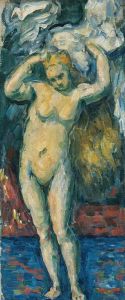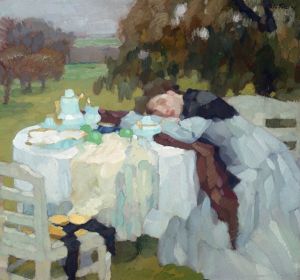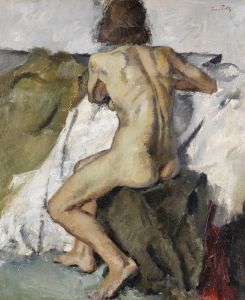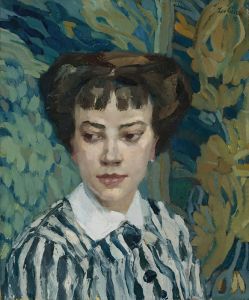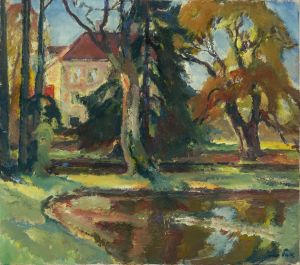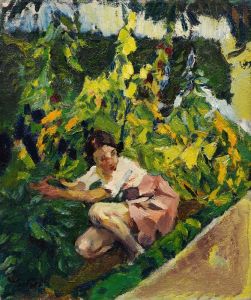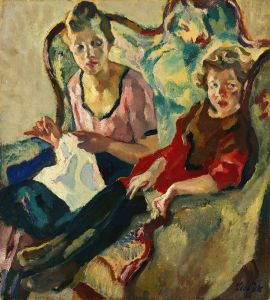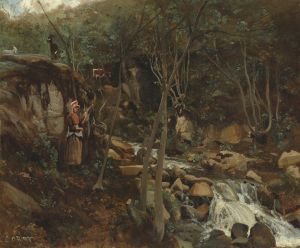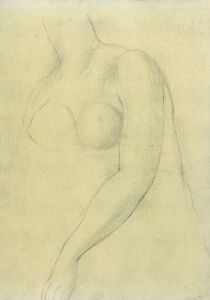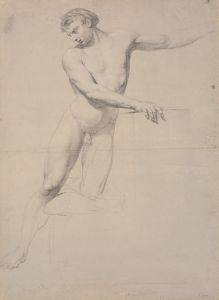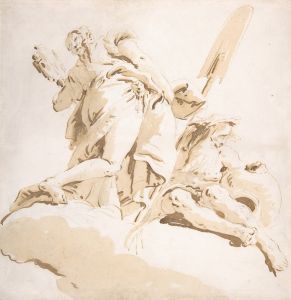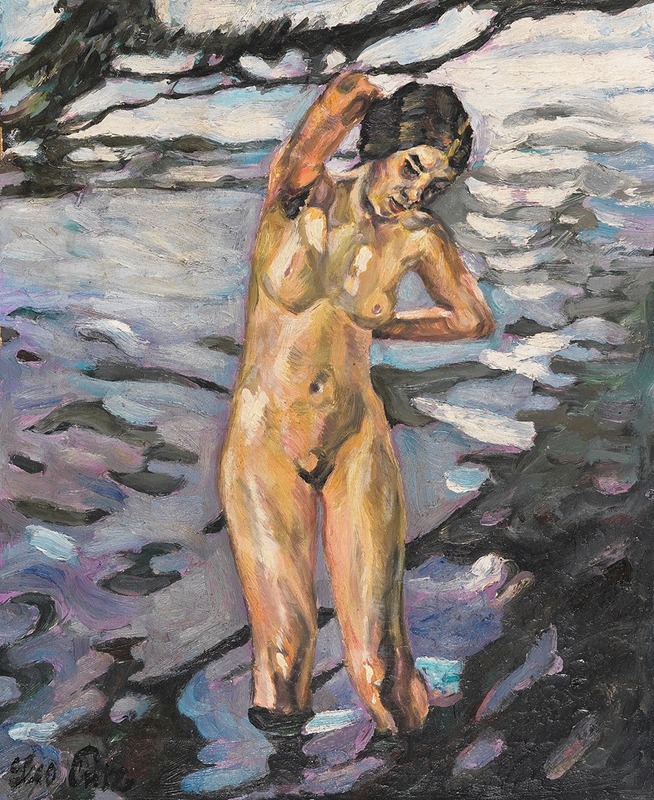
Badende, stehender weiblicher Akt
A hand-painted replica of Leo Putz’s masterpiece Badende, stehender weiblicher Akt, meticulously crafted by professional artists to capture the true essence of the original. Each piece is created with museum-quality canvas and rare mineral pigments, carefully painted by experienced artists with delicate brushstrokes and rich, layered colors to perfectly recreate the texture of the original artwork. Unlike machine-printed reproductions, this hand-painted version brings the painting to life, infused with the artist’s emotions and skill in every stroke. Whether for personal collection or home decoration, it instantly elevates the artistic atmosphere of any space.
Leo Putz was a prominent German painter known for his contributions to the Impressionist and Art Nouveau movements in the late 19th and early 20th centuries. One of his notable works is "Badende, stehender weiblicher Akt," which translates to "Bather, Standing Female Nude." This painting exemplifies Putz's skill in capturing the human form and his ability to convey the delicate interplay of light and shadow.
"Badende, stehender weiblicher Akt" is a testament to Putz's fascination with the human body and his mastery in depicting it with a sense of realism and vitality. The painting features a standing female nude, a common subject in Putz's oeuvre, reflecting his interest in exploring themes of beauty, nature, and the human experience. The subject is portrayed with a natural grace, embodying the ideals of beauty and femininity that were prevalent during the period.
Putz's technique in this painting is characterized by his use of soft, fluid brushstrokes that create a sense of movement and life. The play of light on the subject's skin is rendered with a delicate touch, highlighting the contours and curves of the body. This approach not only emphasizes the physical form but also imbues the painting with a sense of warmth and intimacy.
The background of the painting is typically Impressionistic, with a focus on capturing the essence of the scene rather than intricate details. This style allows the viewer to focus on the subject while still providing a sense of the environment in which she is situated. The use of color is subtle yet effective, with a palette that complements the natural tones of the human body.
Leo Putz was part of the Munich Secession, a group of artists who sought to break away from the traditional academic art of the time. His work, including "Badende, stehender weiblicher Akt," reflects the Secessionist ideals of innovation and a departure from conventional artistic norms. Putz's paintings often explored the relationship between humans and nature, a theme that is evident in his portrayal of the nude figure in harmony with her surroundings.
Throughout his career, Putz's work was well-received, and he exhibited widely across Europe. His contributions to the art world were significant, as he helped to shape the direction of modern art in the early 20th century. "Badende, stehender weiblicher Akt" remains an important piece within his body of work, showcasing his ability to blend traditional techniques with modern sensibilities.
In summary, "Badende, stehender weiblicher Akt" by Leo Putz is a fine example of early 20th-century art that captures the beauty and complexity of the human form. Through his expert use of light, color, and composition, Putz creates a work that is both timeless and reflective of the artistic movements of his time.





